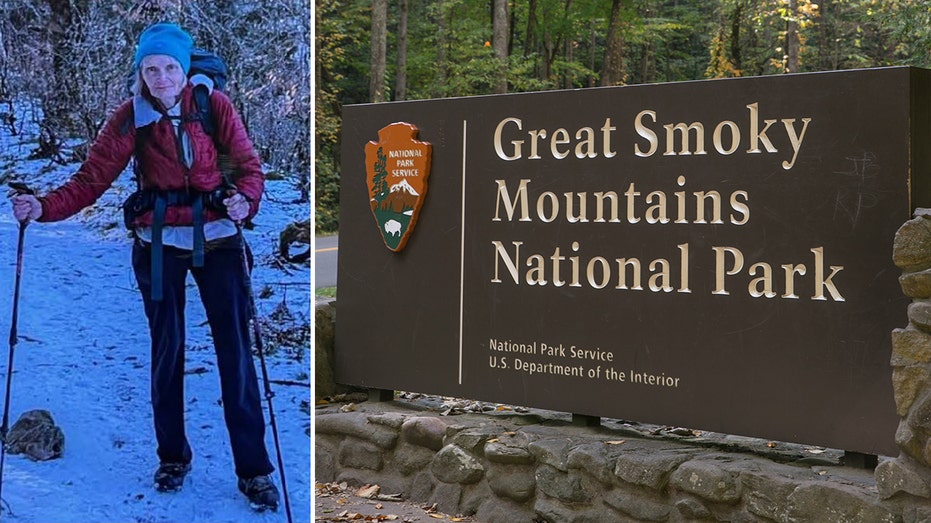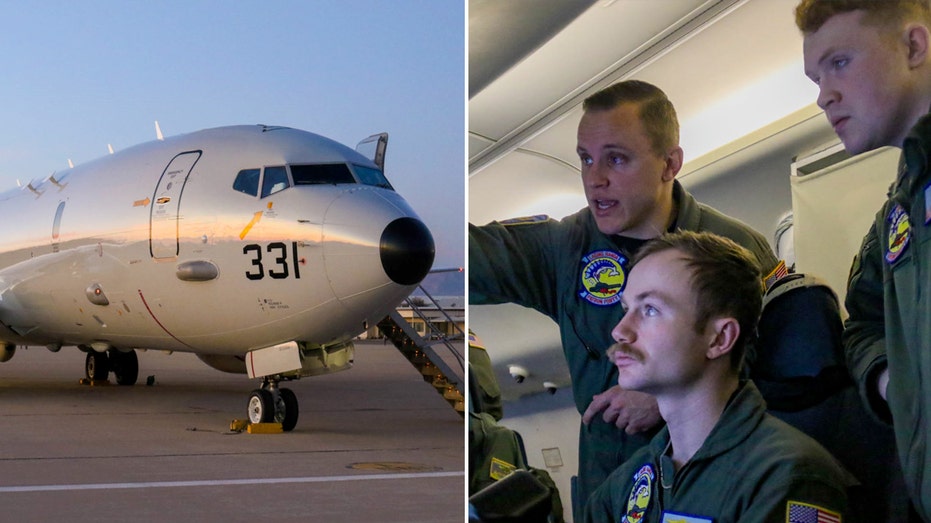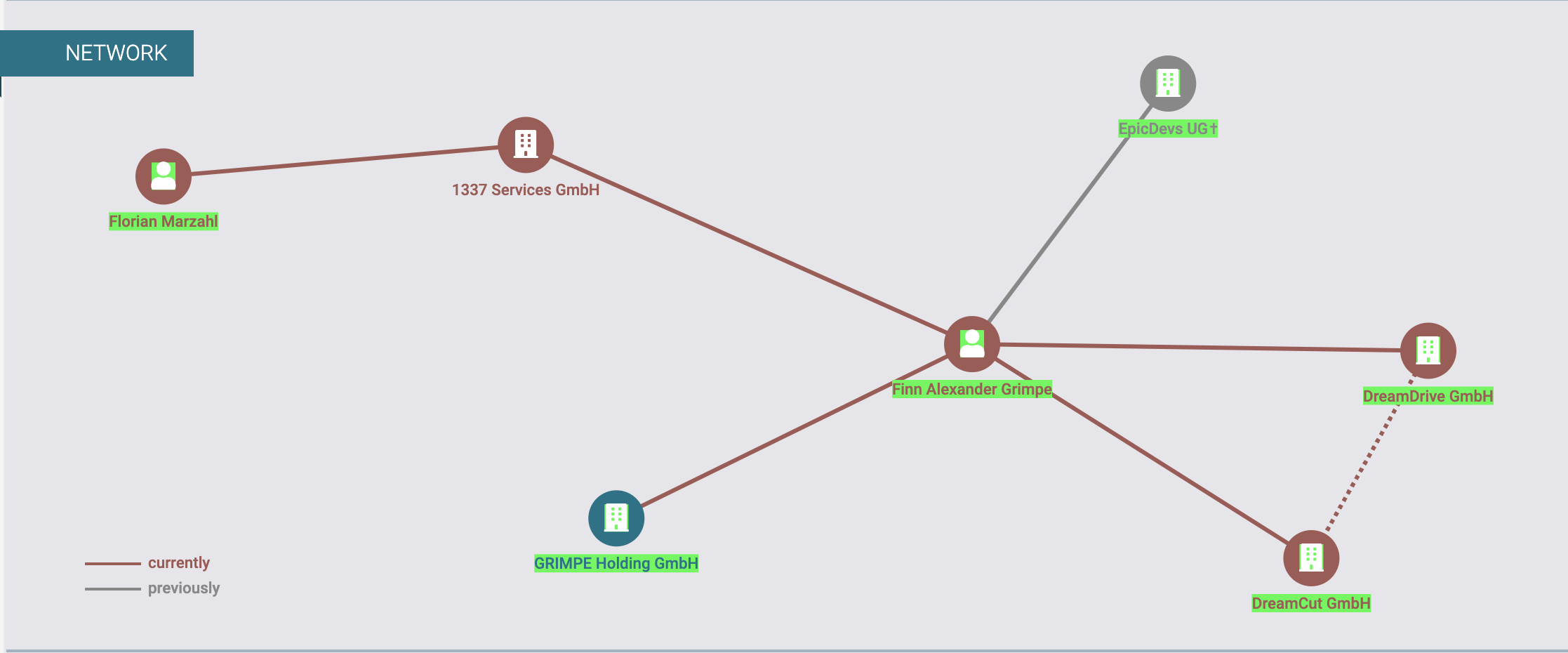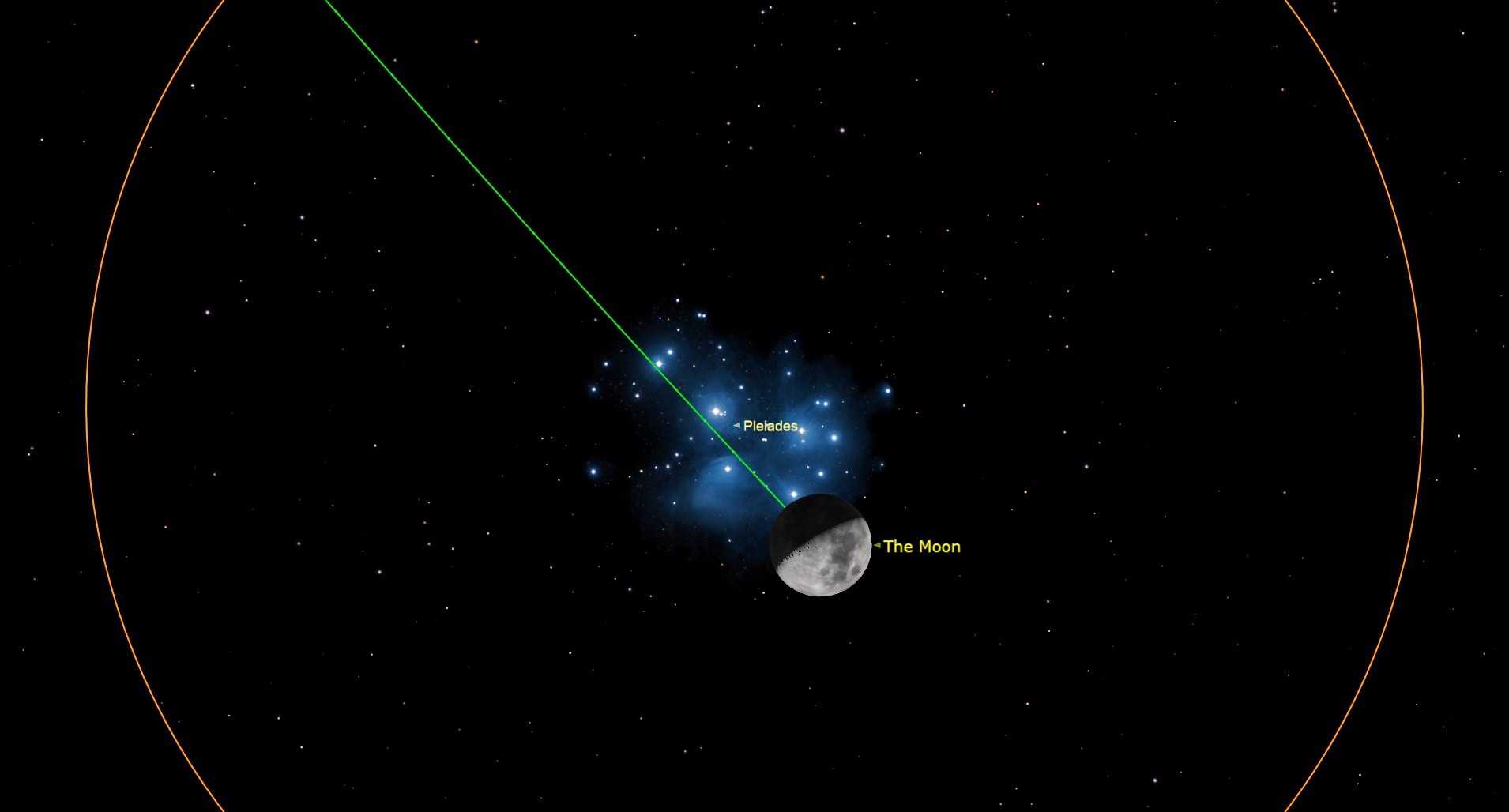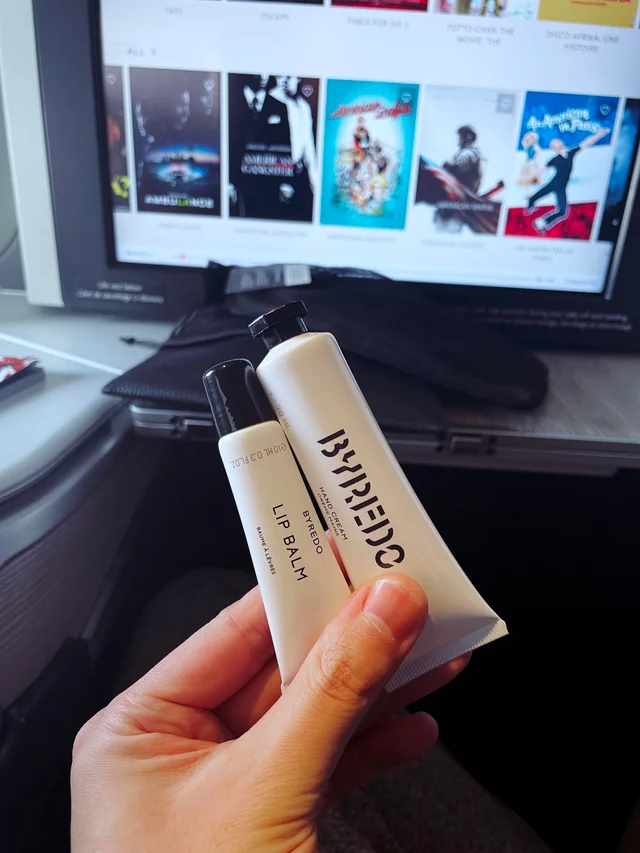Everything You Need to Know (and Bring) for Your First Heli-Ski Trip, According to a Guide
Heli-skiing requires proper preparation to prevent piss-poor performance.
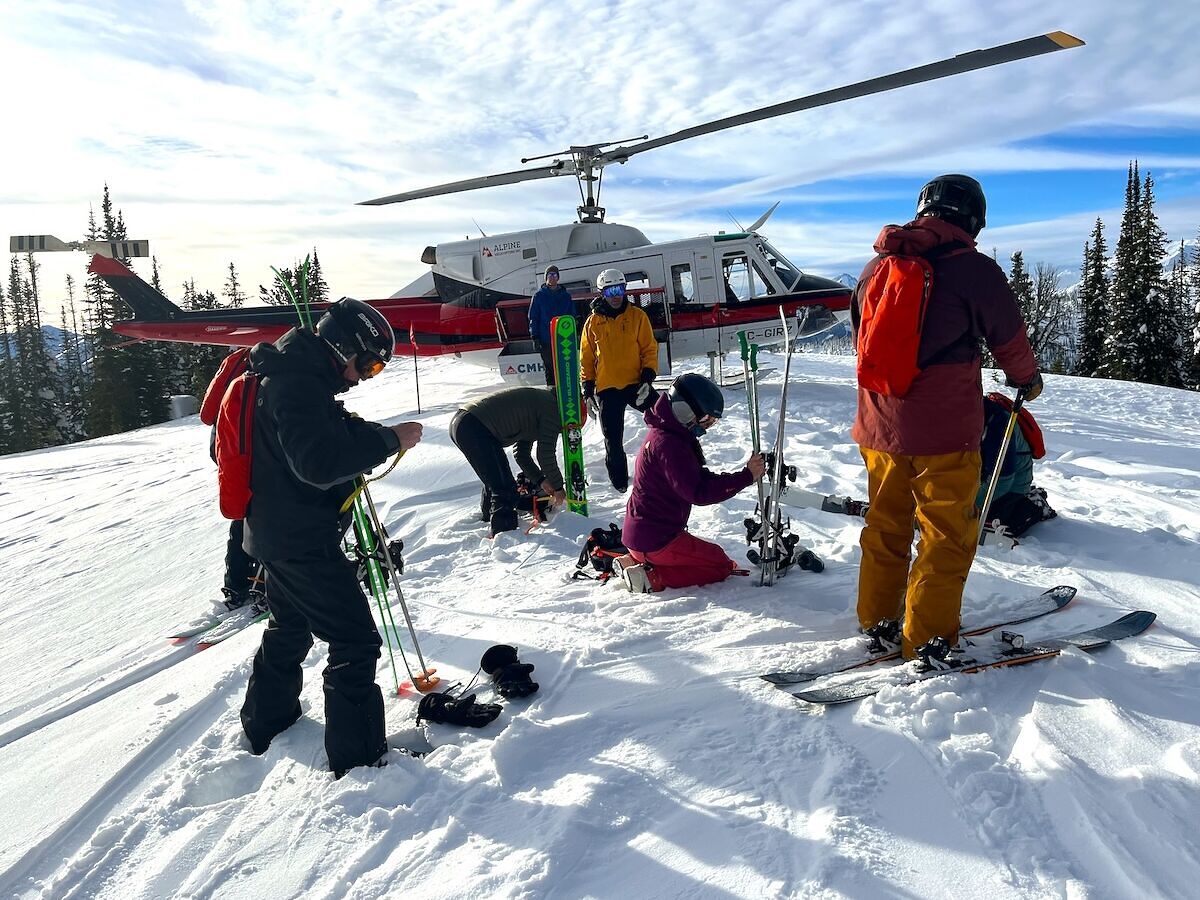
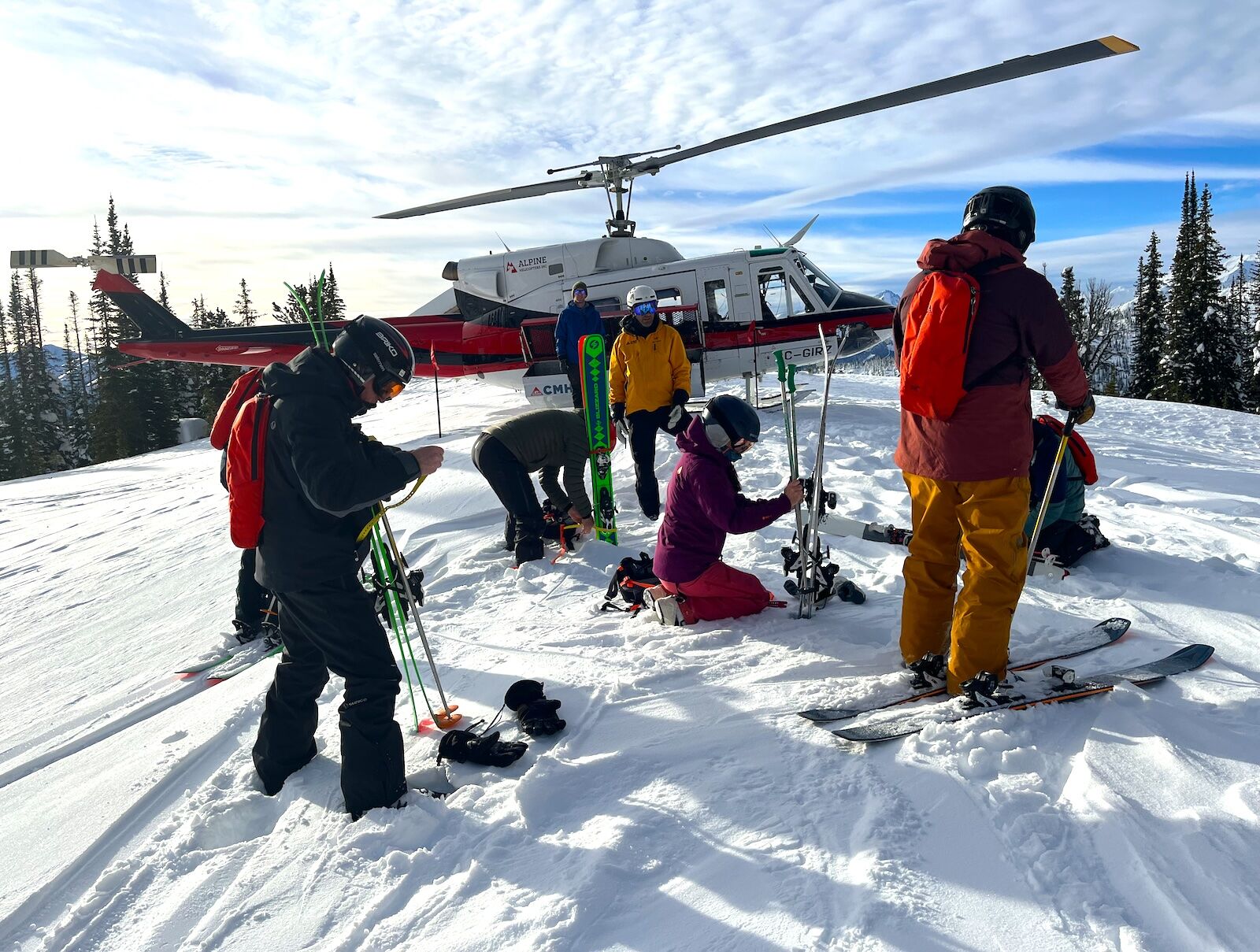
Few moments in action sports get the adrenaline going like the whirring blade of a helicopter. A successful day of heli-skiing requires adhering to the six “Ps” – prior preparation prevents piss-poor performance. To this degree, I spoke with Jesse Seguin, my guide on a recent heli-ski trip with CMH Heli-Skiing about how to prepare for a day in the field, and what you need in order to have the best experience possible.
CMH, short for Canadian Mountain Holidays, operates 11 lodges throughout British Columbia, on the traditional territories of the Ktunaxa, Secwépemc, Syilx, Sinixt, Carrier, and Stoney Nakoda Nations. Some specialize in expert only terrain and require access via helicopter to reach the lodge, while others, such as the Purcell lodge that I visited, are accessible via road from a nearby town. Most heli-ski trips run four to seven days, though the CMH Purcell lodge offers only single-day trips starting at $2,115 CAD, about $1,475.
First-timers can sign up for the Powder Intro program, available at the Revelstoke, Bugaboos, and Cariboos lodges. Here, you’ll learn the ins and outs of skiing high-alpine terrain in a supportive environment that is focused on learning and progression. It’s possible to sign up yourself with a group or come with your own group.
How to prepare for your first day of heli-skiing
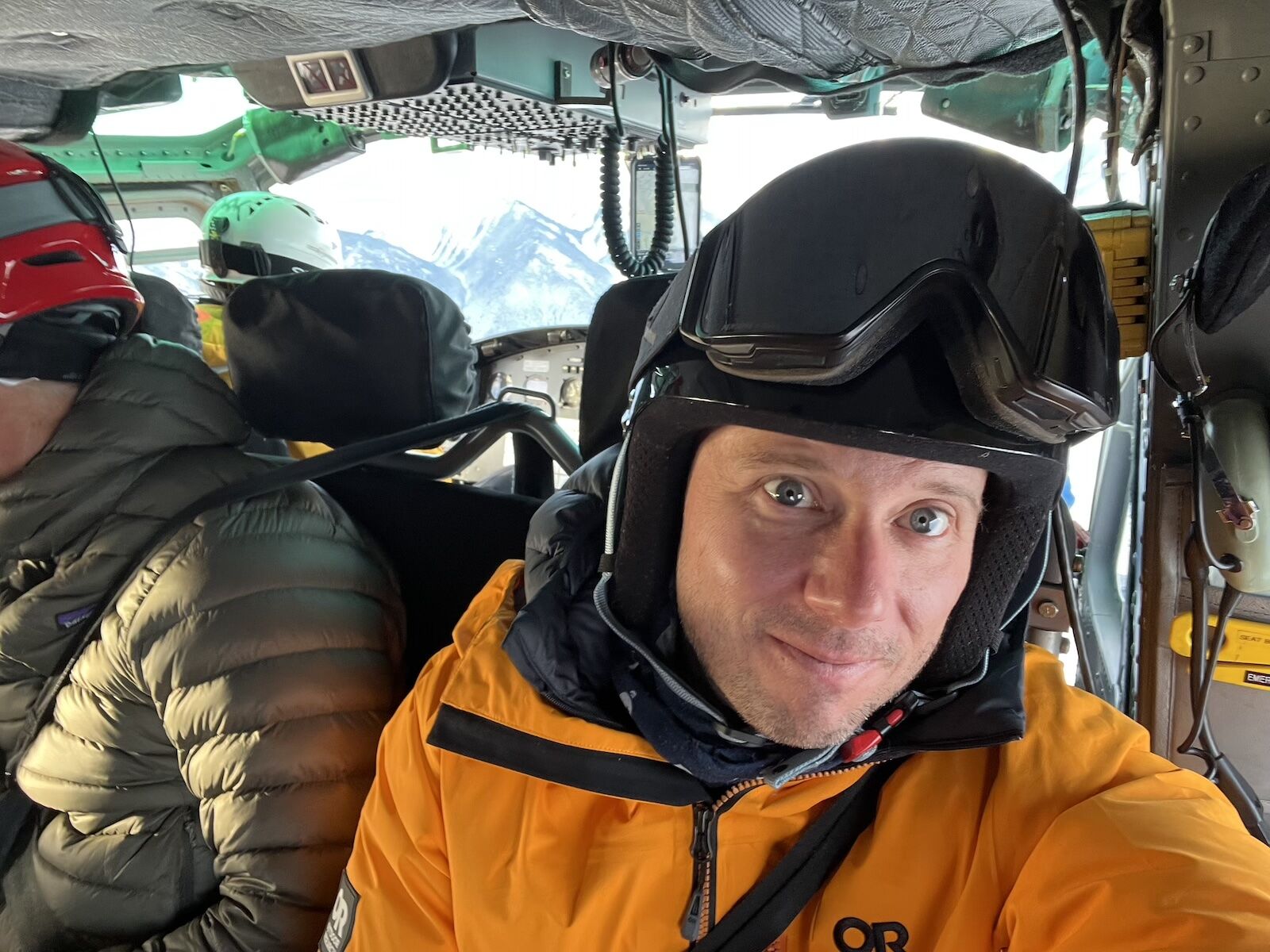
En route to the first run of the day. Photo: Tim Wenger
If, like me, you came of age watching pros like Shane McConkey, Jeremy Jones, and Travis Rice ripping down huge lines in the backcountry, you’ve likely dreamed of standing atop a craggy peak staring down at a steep line, preparing to drop in. In addition to cat skiing and backcountry touring, heli-skiing is the primary way to reach big, high-alpine backcountry lines. Contrary to what you may have seen in ski films, however, commercial heli-skiing doesn’t involve landing a chopper on sketchy ridges or strapping into your board and jumping from an open helicopter door (unless you’re Mike Basich).
“There is a misnomer that at the top of each run guests are required to jump out of the helicopter to disembark,” Seguin says. “False! CMH has been in this business for 60 years now – over the years we have established many standard operating procedures and employ professional guides that will be with you every step of the way. Our guides have an average of 14 years of experience, and an unparalleled level of expertise and experience in their field.”
A walk-through of the helicopter and its safety measures is provided before boarding. Entering and exiting the chopper is an organized procession that involves ducking into a huddle while it lands, boarding one by one via the step on the side, and buckling into the seats before departure. Upon landing at the top of the run, the procession happens again in reverse.
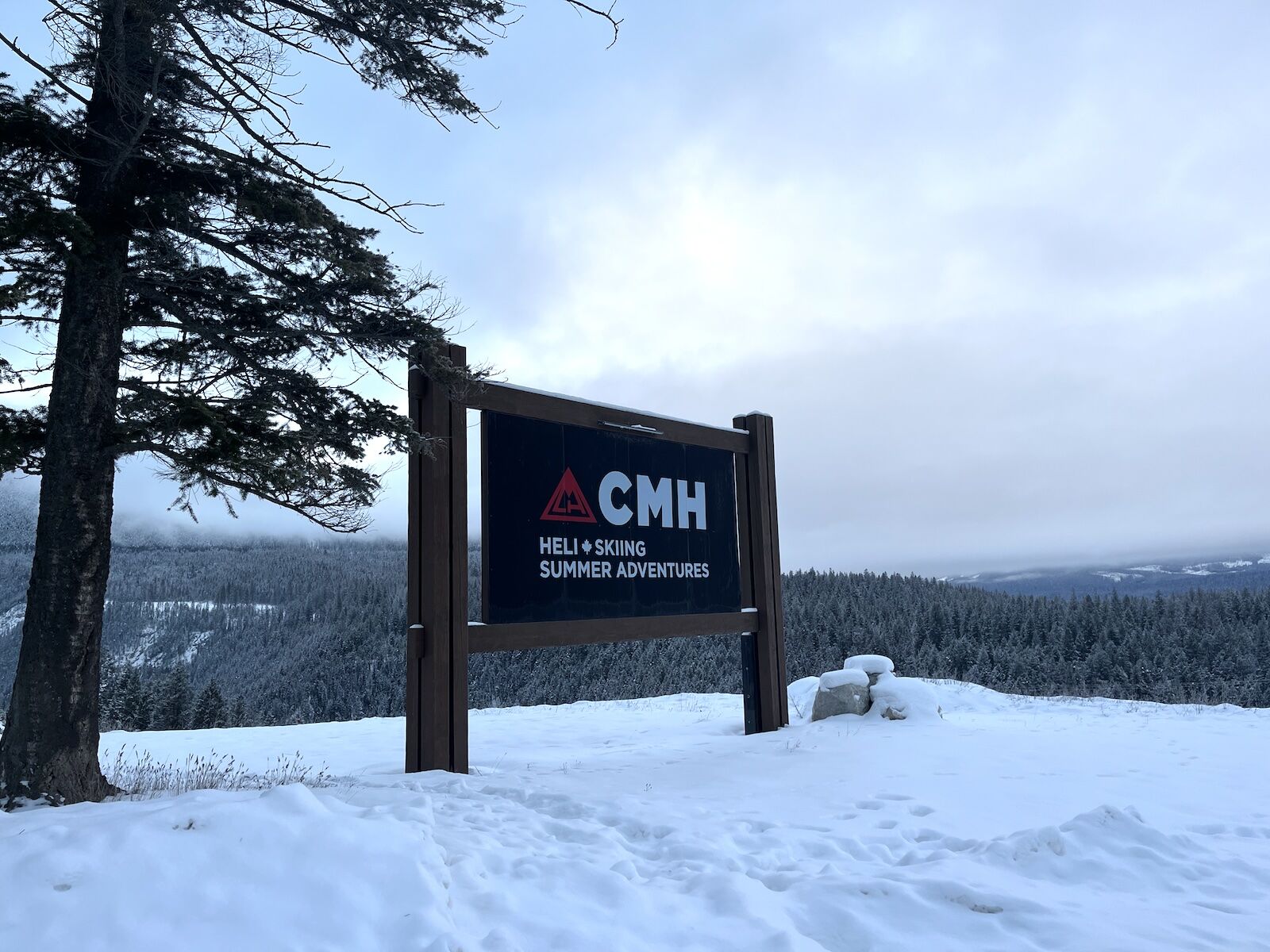
Photo: Tim Wenger
Heli-ski operators like CMH run a well-oiled machine with established landing points atop and below a tenure of named runs that the guides ski regularly and evaluate daily. Those runs are wild, untamed, and as far from skiing a lazy groomer as you can get – but factors such as weather, snow and avalanche conditions, and the ability of the group dictate where you’ll ski on a given day.
“Each day, the team of guides in each of our areas monitor and continually evaluate the evolution of mountain conditions and hazards, collectively determining daily ski and flight programs,” Seguin says. “With safety being our top priority, all landings and ski runs are all established ahead of bringing guests to them, and each guest is trained in the use of safety equipment.”
This safety equipment includes a beacon, shovel, and probe that can be used in case of an avalanche burial. Prior to boarding the helicopter for the first run of the trip, guides walk all guests through a rescue scenario to familiarize each with use of the equipment. At CMH and most major operators, guests can bring their own skis or snowboard or rent a setup from the lodge. While it’s generally more comfortable on your own gear, keep in mind that renting from the lodge ensures you’ll be skiing or riding on freshly tuned equipment that is designed for the exact terrain you’ll be skiing.
A sample itinerary for a day of heli-skiing

Getting ready to load up. Photo: Tim Wenger
Each CMH lodge, like those of other licensed heli-ski operators, has a tenured region of terrain that includes established runs with varying degrees of difficulty. Some lodges and tenures are geared more for expert skiers, while others, including Purcell, have a wider variety of terrain and are more suitable for first-timers and those not as comfortable on big-mountain terrain.
We arrived at the Purcell lodge around 7 AM on our day of heli-skiing. A light breakfast along with coffee and tea was served in the lodge, and a backcountry safety video was shown. After intros to the guides and staff, we headed outside for a safety training exercise that involved using our beacons to locate a buried beacon (simulating rescuing a skier buried in an avalanche). Then, around 9 am, it was time to depart.
A typical day of heli-skiing involves six to nine runs totalling about 10,000 feet of vertical descent. The number of runs you’ll do depends on the ability and stamina of the group along with weather and snow conditions. After our fourth run, we ate lunch of sandwiches and hot soup before loading back into the chopper for the next run. We returned to the lodge around 4 PM for apres-ski snacks and a rundown of the day.
Any skiers that become tired or struggle to enjoy the experience can ride in the helicopter, even if that’s only to skip a run to let the legs rest for a few minutes. There’s no shame in doing so.
On multi-day trips, meals are included at the lodge, where you’ll also sleep. These trips are all-inclusive, though typically sans-alcohol, which must be paid for a-la-carte. Sleeping in a heli-lodge is akin to staying in a high-end, catered backcountry lodge – you can expect chef-prepared food, great coffee, and evenings to be filled with games and revelry.
Staying safe (and remaining calm) in the backcountry
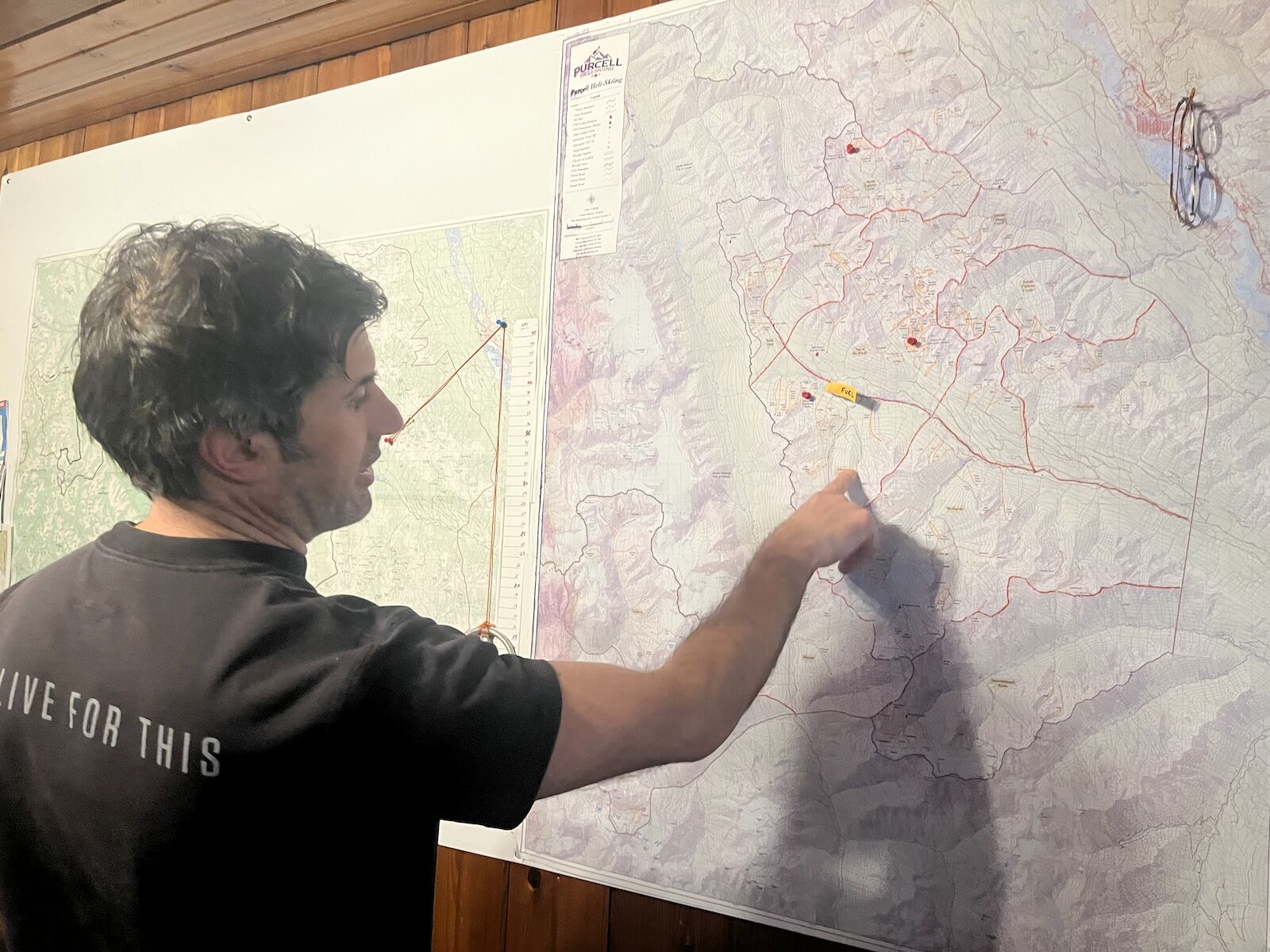
CMH Guide Jesse Seguin discusses terrain in the CMH Purcell tenure. Photo: Tim Wenger
While much of the terrain is in the high alpine and remaining with eyesight of others is simple, CMH employs the “buddy system” when skiing in trees or other areas where it’s possible to be separated from the group. At the top of each run, the lead guide drops in first and sets the course for others to follow. On steep pitches and anywhere that is designated “avalanche terrain,” skiers will follow one at a time while a tail guide maintains eyesight on the person skiing.
“The backcountry is an uncontrolled, unmarked environment,” Jesse says. “While despite our best efforts there are inherent risks that cannot be completely eliminated, with our ACMG certified guides at your side, you’re in the safest hands possible.
In advance of the trip, encourages skiers and riders to “challenge themselves on terrain that isn’t manicured” – such as tree runs and bowls at their local resort.
“In terms of technique, skiing within your ability allows you the opportunity to make some adjustments to your line and speed to avoid certain things such as changing snow conditions, creek holes, and rough terrain,” says. “Always keep a little in reserve to contend with the conditions and situations you may encounter out there. Look ahead while you’re skiing and try to anticipate what might be coming up next. Be comfortable adjusting your turn shape and speed when you may need to react quickly. Focus on finding the balance between exhilaration and thoughtful, controlled skiing.”
Part of staying in control means paying attention to where the lead guide is posted at the bottom of the run, and adhering to their instructions about areas to avoid on the way down. During our day skiing with CMH, Seguin frequently instructed our group to stay to the right or the left of his line due to out-of-view hazards like rocks or seracs. At other points he was keen for us to let it rip, these runs being filled with hoots, hollers, and the occasional tumble – but that’s all part of the fun.
“My pet peeve as a guide is when people are distracted in the field,” Seguin says. “We want you to focus on the task at hand, in particular when the guide is giving instructions. Stay engaged in the day and yourself, and the group will have more success and do more skiing.”
My group did at times get distracted taking photos or chatting about the line we’d just ridden when we should have been listening to instructions, and the guides were quick to whip us into shape.
“One additional note – make sure you slow down well above the guides’ regroup,” Seguin says. “I need my legs to do my job, and I don’t appreciate guests coming in full speed to the group thinking they are in perfect control and slamming on the brakes right at my ski tips – respect the guides and other group member’s welfare.”
That said, Seguin notes that the entire experience is designed to be life-changing and inspirational, and that notions of intimidation surrounding heli-skiing are often unfounded.
“The idea is to come home with a smile on your face and some experiences to share,” Seguin says. “Your role as a guest is to place your trust in us and ask questions you may need in order to feel comfortable. On top of that I would suggest focusing on good breathing, trying to relax as much as possible, and soak it all up!”
Gear to bring with you on your heli-ski trip
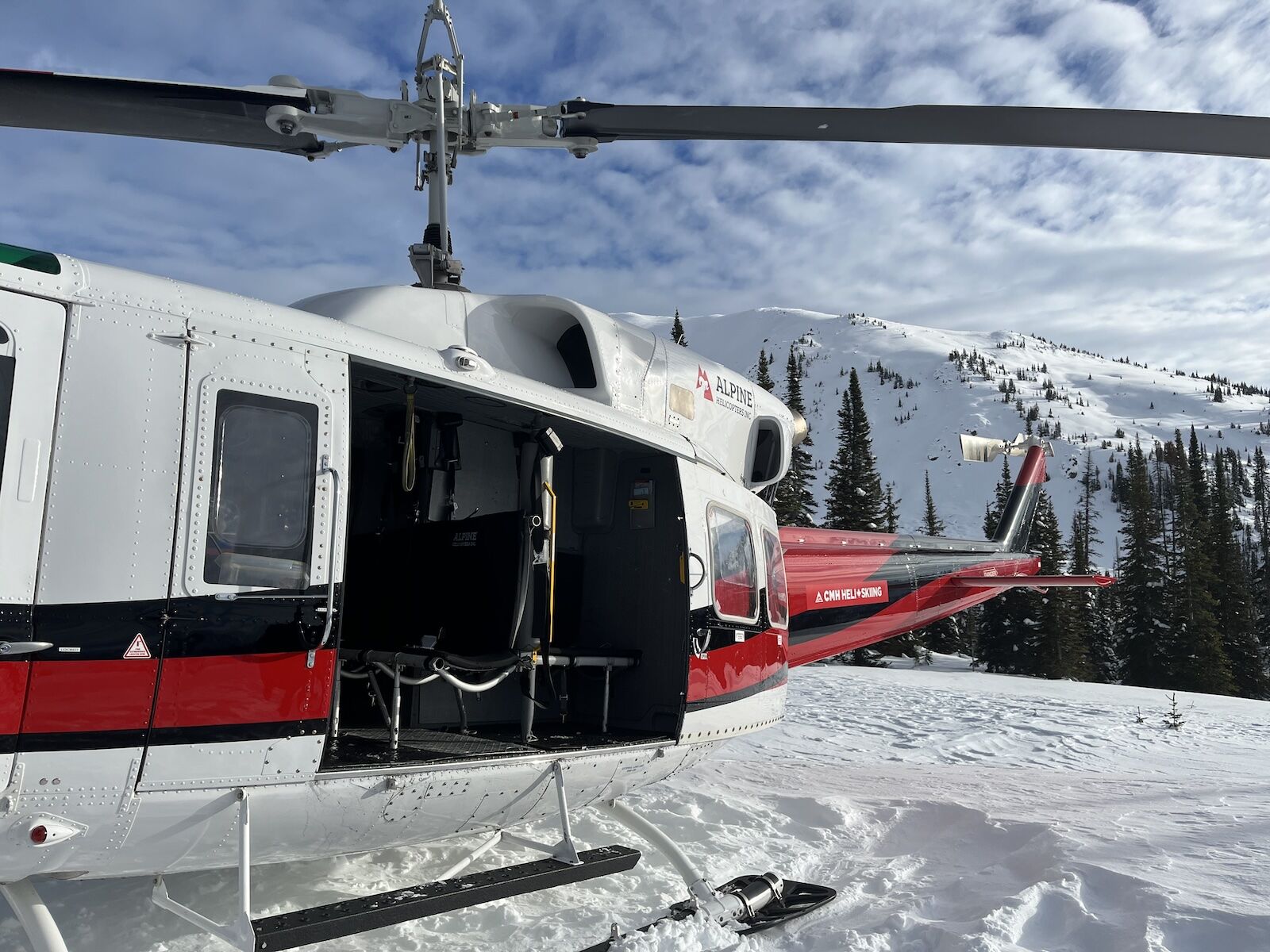
An open cabin ready to board. Photo: Tim Wenger
Just so you know, Matador may collect a small commission from the links on this page if you decide to make a purchase.
Heli-skiing generally guarantees you’ll be riding powder – meaning a pair of skis or a board designed for riding in the terrain park isn’t going to cut it. Generally, most ski gear you bring to your local resort will do the trick — goggles, boots, a helmet, and underlayers. However, you’ll want powder skis or a directional snowboard with wide nose and tail, a tapered shape, and for snowboarders, a rocker camber. These features are designed to keep you afloat in deep powder without having to lean back the entire time, preventing unnecessary burning of energy. After three heli-ski trips I’ve come to trust mittens and bibs as my go-tos, along with a good shell jacket. Myself or fellow Matador editors use and recommend the following equipment for heli-skiing.
Black Crows Atris (men’s) or Atris Birdie (women’s) skis
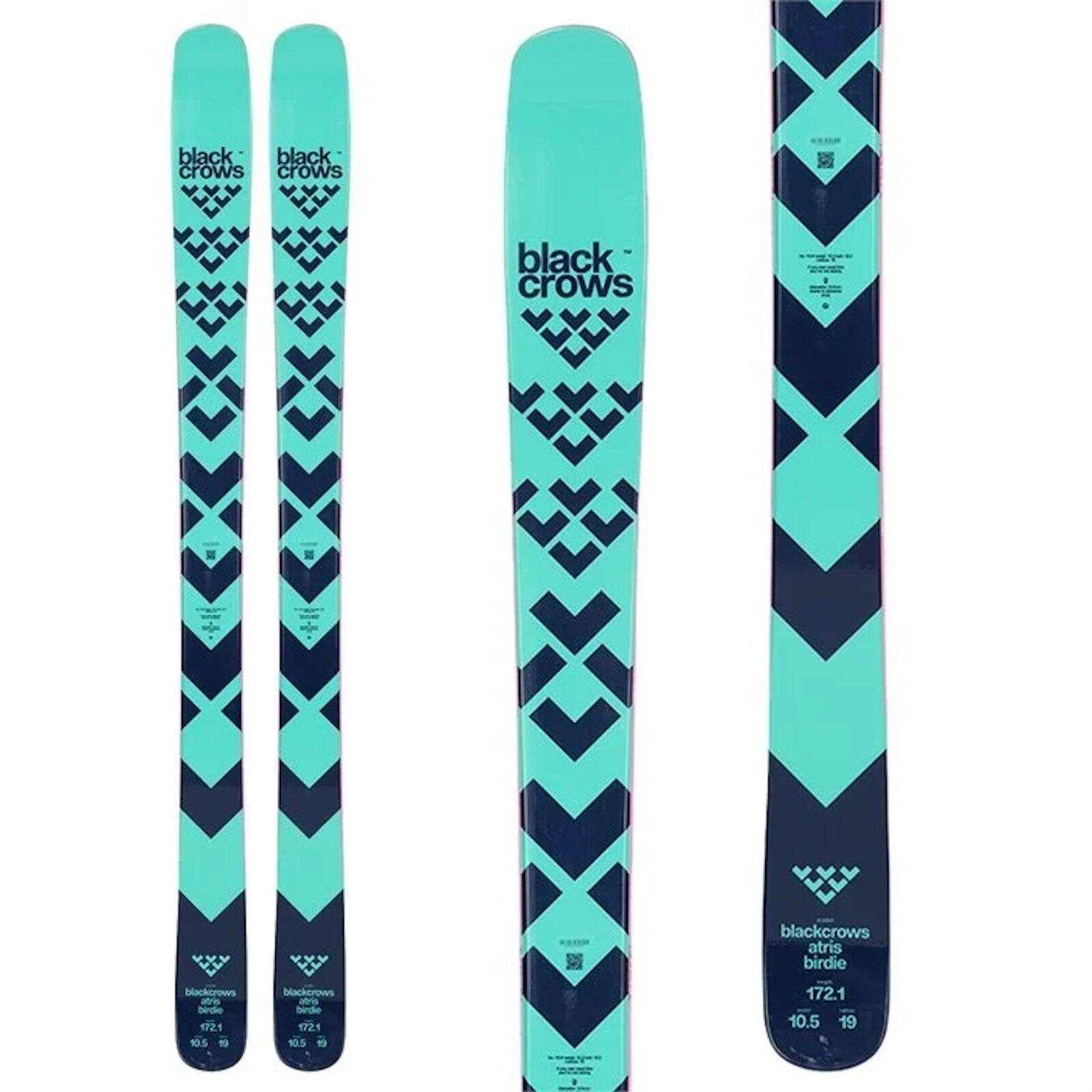
Photo courtesy Black Crows
The Black Crows Atris is a popular all-mountain ski renowned for its versatility. With a 105mm waist width, it offers a good balance of powder float that translates well in steep terrain. Its playful nature makes it agile in tight trees and the rocker profile and wide tip provide excellent floatation in deep snow, making it a strong choice for powder enthusiasts. However, its all-mountain capabilities extend beyond powder, allowing it to confidently handle groomed runs and diverse snow conditions. Bonus because these skis are currently 50 percent off at EVO (links below), saving you nearly $500.
Price: On sale at EVO for $464.99
Weston Japow (men’s) or Revel (women’s) snowboards
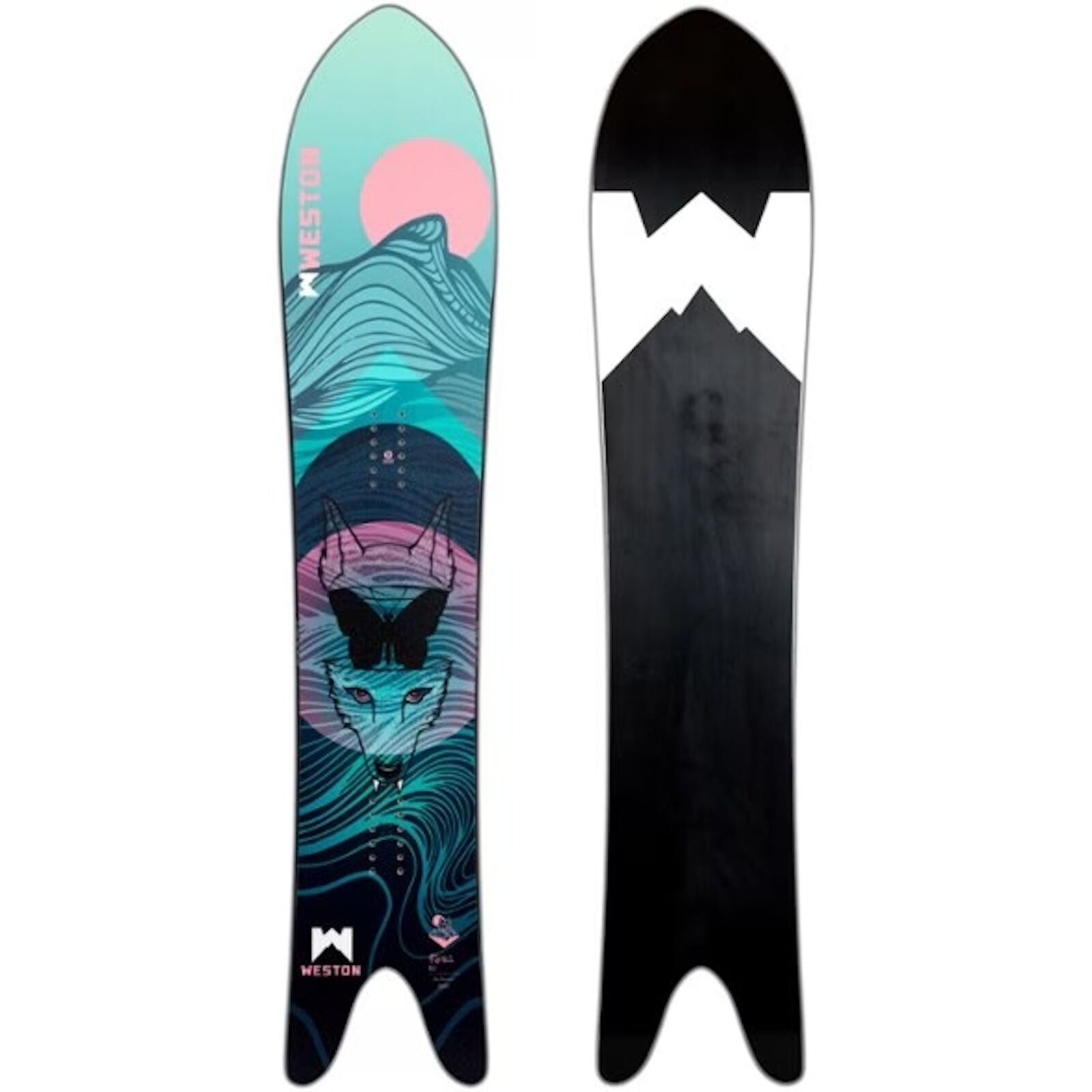
Photo courtesy Weston
Weston started in Minturn, Colorado, as a powder and touring snowboard manufacturer focused on one thing – riding big lines. The brand designed and shaped these boards based on extensive testing in the deep powder of Hokkaido, meaning you’ll have a dependable board no matter how deep the snow is on your heli-ski trip.
Price: $624-$649
Outdoor Research Hemispheres II Shell
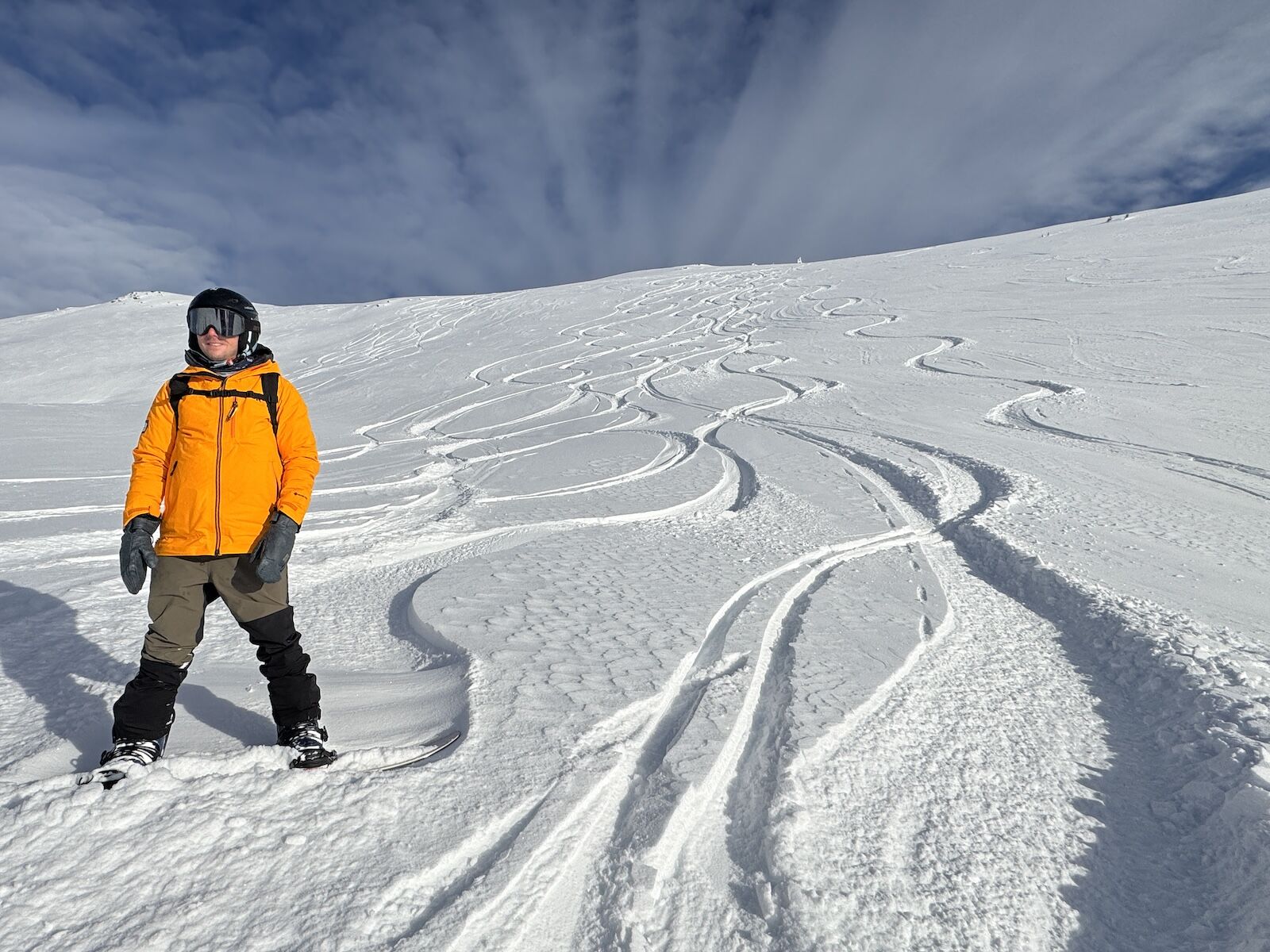
Photo courtesy Tim Wenger
Heli-skiing requires being prepared for varying conditions including wind, snow, sun, and extremely cold temps. Having a good shell jacket that is wind- and water-resistant with GORE-TEX C-Knit Technology fabric while also being easy to roll up and put in your backpack is key, and I’ve fallen in love with the Outdoor Research Hemispheres II Shell this season for exactly this reason. I keep it rolled in my pack at all times, and it has now replaced the bulky ski jacket I’d worn for years even on resort days.
Price: $648.95
Outdoor Research Hemispheres bibs
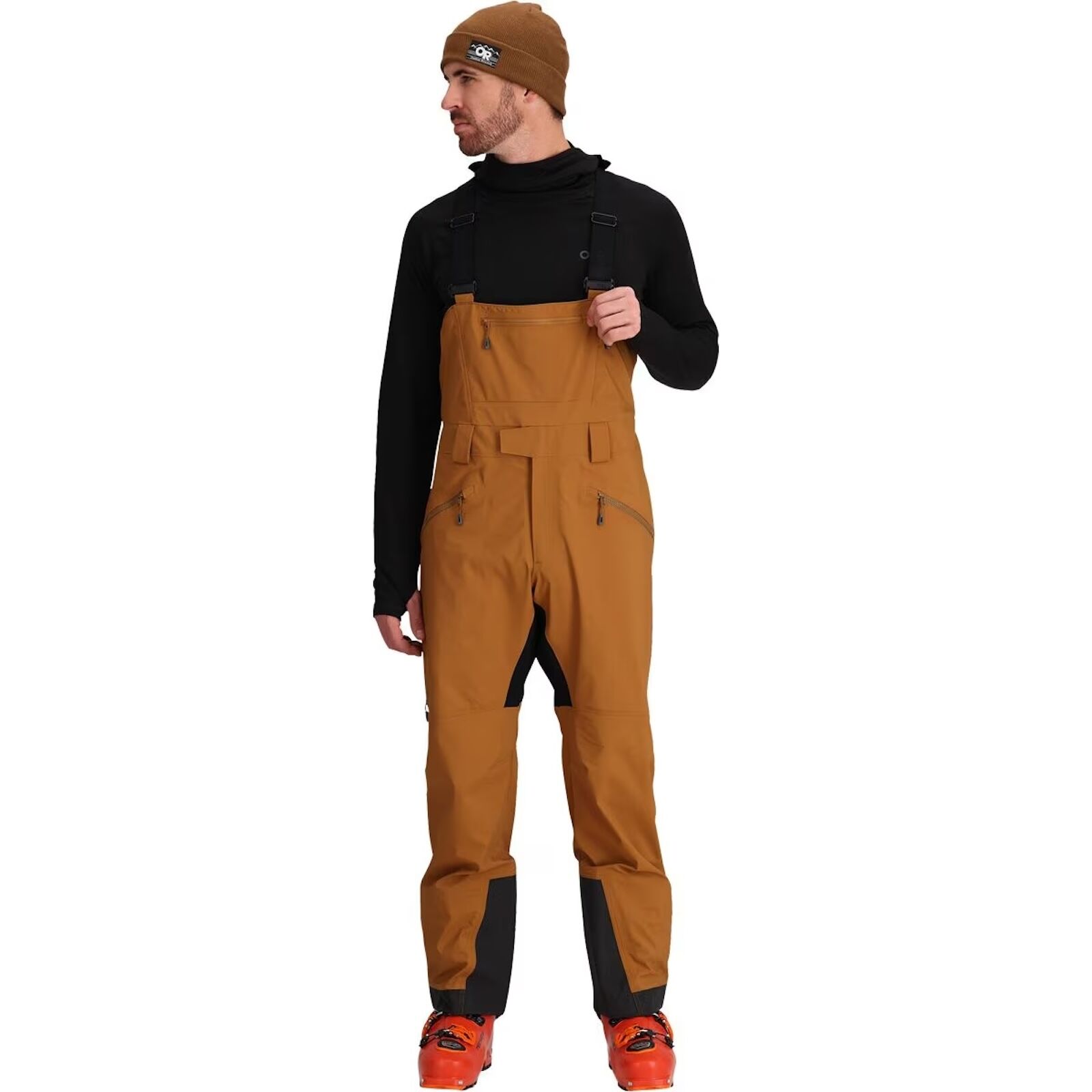
Photo courtesy backcountry.com
Bibs at first seem awkward but they’re actually super flexible and comfy for long powder days. Heli-skiing requires a lot of maneuvering in and out of the chopper, ducking down while it takes off or lands, and of course, the skiing itself, and the chunky rigidity of traditional ski pants just don’t cut it in these circumstances. The Outdoor Research Hemispheres bibs fit and look great underneath the OR shell, to boot.
Price: $648.95
Oyuki Sencho GORE-TEX mittens
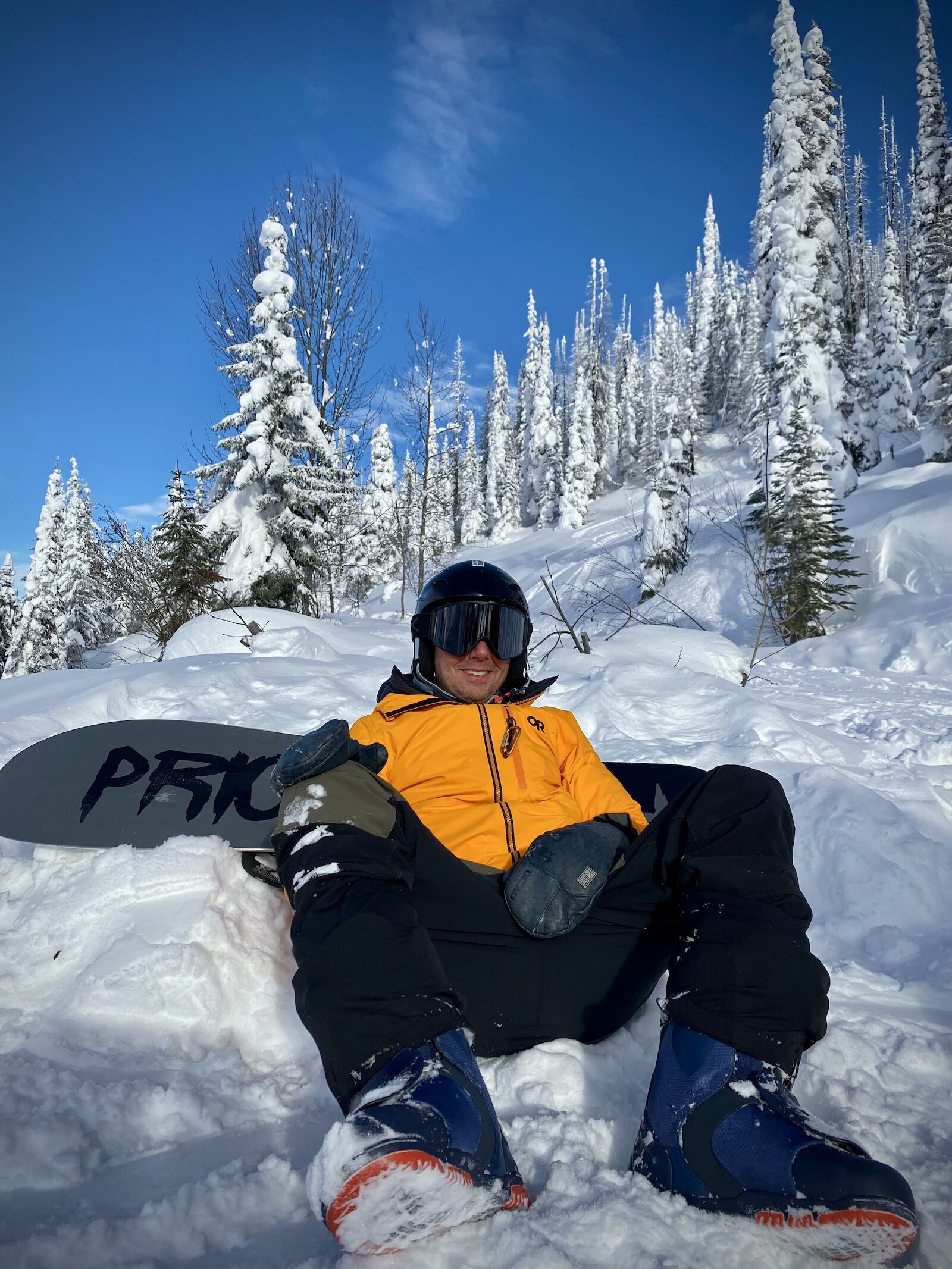
A well-used pair of mittens. Photo courtesy Tim Wenger
I prefer mittens for heli-skiing and resort days because they allow my fingers to warm each other and provide added flexibility. The Oyuki Sencho mitts are easy to slide on and off, and will stay on your arm while you adjust goggles or other gear. They’re warm but maneuverable and after a coating of waterproof wax I’ve never had issues with wetness or cold. ![]()
Price: $95.97
